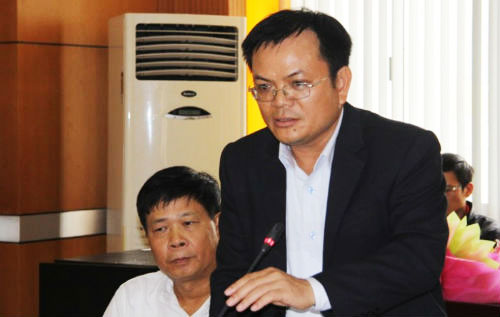PetroVietnam appoints saviour for ailing fibre subsidiary

PetroVietnam charged new general director cum chairman Pham Van Chat to stop the continuous losses of PVTex within six months.
Chat said that Vietnam’s participating in the Trans-Pacific Partnership Agreement (TPP) would offer an opportunity for PVTex to restore its manufacturing activity as well as streamline its operation.
PVTex’s factory in the northern port of Haiphong was shut down in September 2015, merely a year after coming into operation. The company may be at the brink of bankruptcy due to higher-than-expected costs and uncompetitive products.
According to a report published by PetroVietnam, in 2015 PVTex incurred losses of VND1.2 trillion ($53.8), up VND120 billion ($5.38) on-year. PVTex’s poor financial standing made it impossible to pay off its total bank debts of $221.3 million, including $70.7 million in short-term loans.
In March, PVTex requested the Vietnam government for an additional $34 million loan to invest in the plant, with a 23-year payback time instead of the nine years stipulated by a previous loan. PetroVietnam also proposed that the government adopt tariff barriers against imported fibers from China and Thailand, and asked for help in selling the factory's products to local garment-makers.
PVTex is 74 per cent owned by PetroVietnam, With the remaining 26 per cent held by PetroVietnam Fertilizer and Chemicals Corporation. The factory came into operation in May 2014 after six years of construction. The facility has a capacity of 236 tonnes of polyester fibre and yarn per day.
What the stars mean:
★ Poor ★ ★ Promising ★★★ Good ★★★★ Very good ★★★★★ Exceptional
Latest News
More News
- Businesses ramp up production as year-end orders surge (December 30, 2025 | 10:05)
- Vietjet chairwoman awarded Labour Hero title (December 29, 2025 | 13:06)
- How to unlock ESG value through green innovation (December 29, 2025 | 10:03)
- AI reshapes media and advertising industry (December 29, 2025 | 08:33)
- FPT and GELEX sign deal to develop blockchain tech for global markets (December 29, 2025 | 08:29)
- Vietnam’s GDP forecast to grow by 9 per cent in 2026 (December 29, 2025 | 08:29)
- Women entrepreneurs are key to Vietnam’s economic growth (December 29, 2025 | 08:00)
- Vietnam's top 500 value-creating enterprises announced (December 27, 2025 | 08:00)
- The PAN Group shaping a better future with ESG strategy (December 26, 2025 | 09:00)
- Masan Consumer officially lists on HSX, marking the next phase of value creation (December 25, 2025 | 13:20)

















 Mobile Version
Mobile Version